It's Alive... Or Is It?
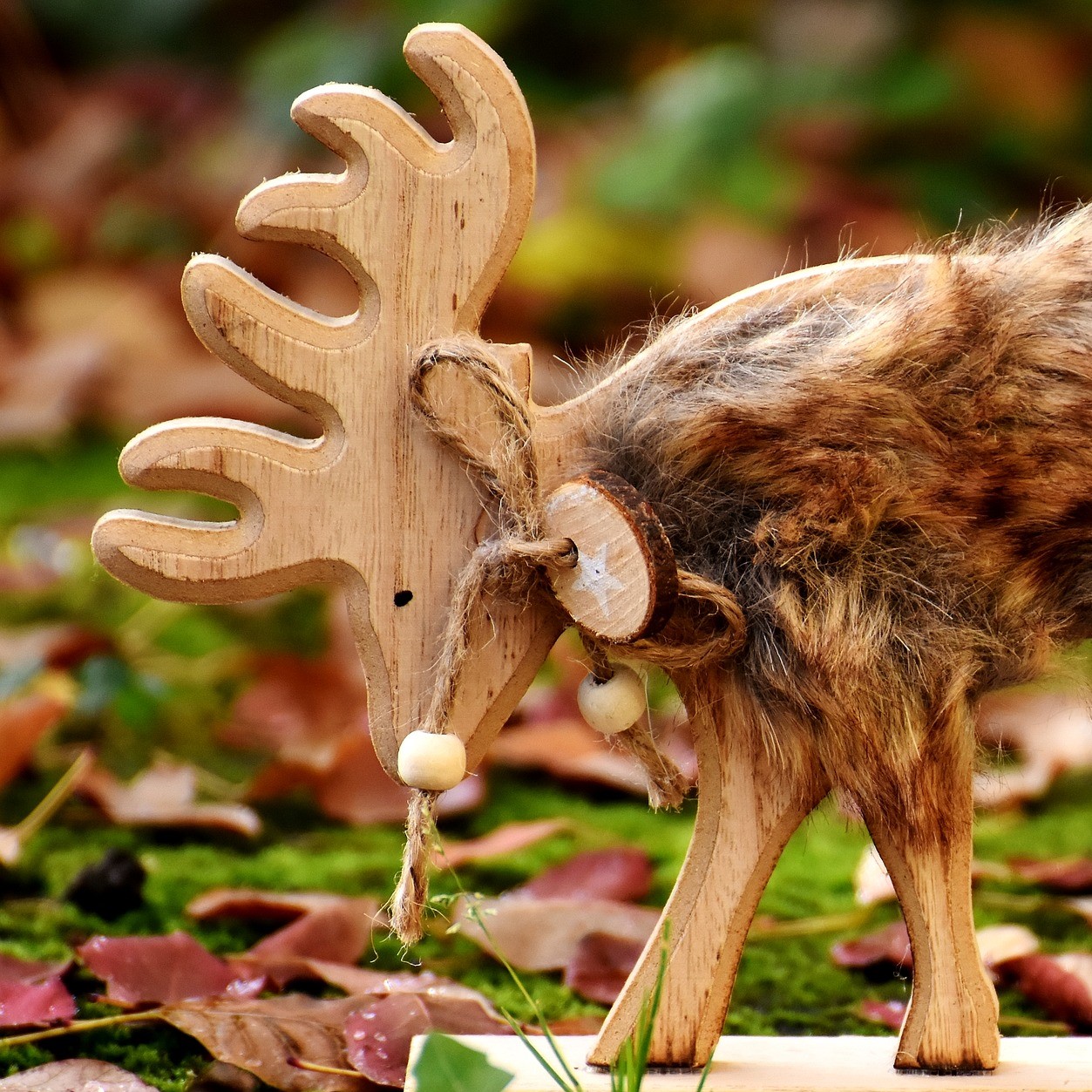
Wooden carving of a deer (Alexas _Fotos, Pixabay)

Wooden carving of a deer (Alexas _Fotos, Pixabay)
How does this align with my curriculum?
| Grade | Course | Topic |
|---|
Students develop and apply comparing & contrasting, observing and drawing conclusions skills as they investigate living and non-living things.
Overview
Timing
30- 40 minutes
Setting the Stage
It is not always easy even for adults to differentiate between living, dead and non-living things. Since scientists do not always agree on a definitive set of characteristics that delineate living from non-living, it should not be surprising that younger students have difficulty differentiating between living and non-living things.
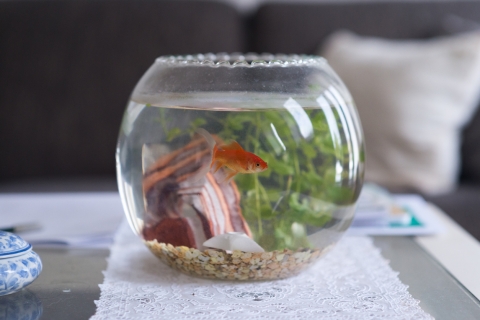
Misconception Alert
Developmentally, young children do not have an internalized understanding of life cycles (e.g., living things are born, live, and die). They may believe that if something moves, it must be a living thing. By the same token, they may also believe that when something dies it becomes a non-living thing.
This inquiry provides opportunities for students to more fully develop a scientific understanding of living and non-living things. A living thing is something that is or has been alive. A non-living thing is anything that is not nor has ever been alive. Students develop this understanding as they observe and compare and contrast examples of both, then use the information they gather to draw conclusions about the characteristics of living things. For young students, the following ideas should be discussed in a developmentally-appropriate way to avoid creating misconceptions.

Infographic - Text Version
Living things need energy and water and they make waste. They need to respire. Living things reproduce or create offspring. They grow, respond to changes in their environment and die.
- Living things need energy to live
- Living things need to respire
- Living things need water
- Living things make waste
- Living things reproduce/create offspring
- Living things grow, change, and die
- Living things respond to changes in their environment
This inquiry could begin from:
- Questions and/or comments from students about a fish tank or small terrarium set up in the classroom. Discuss using questions such as:
- “What are some things you’ve observed about this environment?"
- “What things do you see that are alive? What things are not alive? How do you know?"
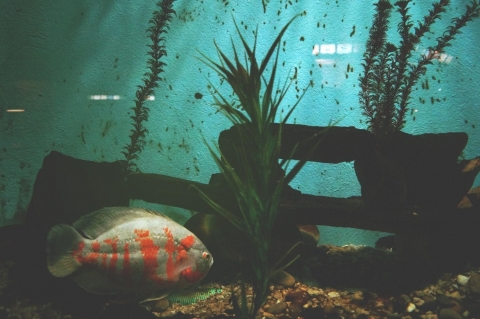
- Reading a book such as I am Josephine and I am a living thing by Jan Thornhill. Discuss using questions such as:
- “What does it mean to be a human being? When you look at the picture of the human beings in the book, how do you think they are all alike? How are they different?"
- “Josephine says she is a living thing. When you look at the picture of living things in the book, why do you think Josephine says she belongs to this group?"
- “How can Josephine be a living thing, an animal, a mammal and a human being all at the same time?"
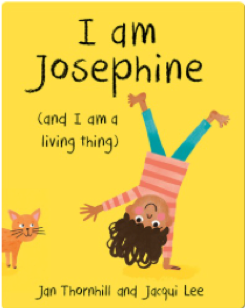
Details
- Sets of picture cards depicting living and non-living things (1 set per group)
- Optional: fish environment (bowl, water, stones, living plant [number of plants is dependent on the size of the bowl], goldfish, food for goldfish)
OR
- Optional: terrarium environment (pre-made or make your own using a clear glass or plastic container, small pebbles, succulents and/or cacti, potting soil, and a spoon or a funnel for placing soil)
- Prepare sets of picture cards of living and non-living things
- Set up a fish habitat or terrarium (optional). Be sure to include some living (live plants, fish) and non-living (pebbles, shells or small rocks) things for comparison
Students develop and apply the skills of observing, comparing & contrasting and making conclusions as they investigate living and non-living things.
Students:
- work in small groups to sort and classify picture cards according to whether they think the objects are living or non-living.
- Educator supports and facilitates discussions as required, using questions such as “I notice that your living things group has some people, some animals and some plants in it. Why did you decide to put them all in the same group?” “You said that you put the weather vane with the living things group because it can move. What else can the weather vane do that other living things can do?” (e.g., can the weather vane take in food?)
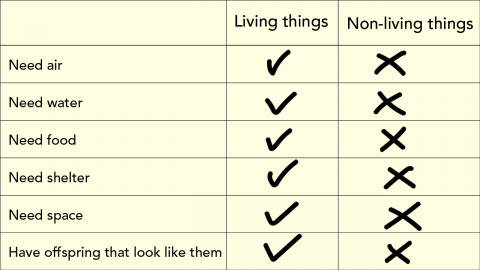
Chart - Text Version
A chart contrasting living things and non-living things. Living things need air, water, food, shelter, space and have offspring that look like them. Non-living things do not.
- further sort and classify the living things group according to their own criteria.
- Educator asks questions such as “I notice you put the swan and the cat in the same group. What made you decide to do that?” “You have put the giraffe and the dog in the same group. Could I add a picture of a tree to that group? Why?” to help students understand that living things can be plants or animals (which includes humans). Some students may make a separate group for humans. Refer back to a book such as I am Josephine and I am a living thing to remind students that humans are also considered part of the animal group. This may become clearer as the group defines what it means to be a living thing.
- share their thinking about how to know if something is living or non-living.
- Educator records students’ thinking and facilitates discussion as required.
- determine criteria for classifying something as a living thing.
- Educator records criteria on a chart.
- pick one thing that everyone in the group agrees is a living thing (e.g., a rabbit, a newborn baby).
- Educator uses the recorded list to see if the living thing chosen by the group fits the criteria. If, for example, the group agrees that a rabbit will get bigger, it gets a check. If the group does not agree on something, it gets crossed off the list (e.g., a rabbit can talk).
- Educator facilitates a repetition of the process, picking some living things that would eliminate some of the misconceptions. For example, “I wonder what would happen if we used a plant instead of an animal? What plant shall we choose?” Continue until only the common characteristics of living things are left on the list (e.g., breathe, grow, reproduce).
- listen to a book such as I am a living thing by Bobbie Kalman. Use this information along with prior knowledge to draw conclusions about what living things have in common.
- Educator guides the reading and facilitates the discussion, asking students to listen for things that living things have in common that are not already on their list. (Living things are characterized by their ability to take in food to create energy, to respire, to make waste, to reproduce/create offspring, grow and change, and to respond to changes in their environment.)
- Educator records them on a list.
- compare living things to nonliving things, using revised list and picture cards of nonliving things
- Educator facilitates the conversation, asking questions such as “Would we classify a rock as a living thing? Why/why not?”
Observe and document, using anecdotal comments, photos and/or video recordings, students’ ability to:
- Observe - students observe a variety of living and non-living things and record their observations
- Compare & Contrast - students identify similarities and differences between living and non-living things, drawing on observations and new and prior knowledge
- Make Connections - students use prior knowledge and information gathered throughout the Inquiry to draw conclusions about the characteristics of living things.
| Students: Saying, Doing, Representing |
Educator Interactions: Responding, Challenging |
|---|---|
| Educator Interactions: Responding, Challenging |
|
| Students sort and classify images of living things using their own criteria. |
|
| Students share their thinking about how to tell if something is living or non-living and make a list of criteria for classifying something as a living thing. |
|
| Compare a variety of living things to the criteria. |
|
| Draw conclusions about what all living things have in common. |
|
Literacy
- Use oral language to explore and develop an understanding of ideas and concepts (e.g., the difference between living and non-living things)
- Use processing skills (e.g., draw conclusions about criteria for living things)
Mathematical Thinking
- Organize objects into categories by sorting and classifying objects (e.g., sort and classify living and non-living things; further sort and classify living things)
If your students are interested in learning more, the following may provoke their curiosity:
- Some Indigenous peoples believe that the universe and all natural objects within the universe have souls or spirits. This belief says that souls or spirits exist not only in humans but also in animals, plants, trees, rocks, and all natural forces and phenomena such as the rain, sun, stars and moon. In most Indigenous languages, there are no animate-inanimate comparisons between things: all souls are equal to human souls.
Contact a local Indigenous group to invite an Elder or Traditional Knowledge Keeper into your classroom to share stories about the Sun, the Moon, the water and the land from their cultures. Afterwards, discuss using questions such as:- “Are the Sun, the Moon, rocks and water living or non-living things? Why do you think that?”
- “Many Indigenous people believe that everything in the world has a soul or a spirit. How did the story demonstrate that belief?”
- "If you believed that everything in the world was living, how would you behave differently?”
- Students may wish to further explore the fish tank environment in terms of the role of non-living things. Discuss using questions such as
- “Why did we put the gravel in the fishbowl? What do you think would happen if we took it out?” (Gravel provides a home for beneficial bacteria that are necessary to eliminate waste produced by the fish, leftover food, and plant debris in the aquarium. If the bacteria don't have the gravel to live in they may not reproduce enough to keep the aquarium safe for the fish. The gravel acts like soil for the aquatic plants by providing a place for them to root and grow.)
- “We added a rock and a model of a sunken ship to our fishbowl environment. Why do you think this is important for the fish?” (Placing objects like rocks in the bowl helps to make the fish feel safer, more comfortable and less stressed. This means the fish are healthier and better able to fight diseases. These objects also encourage fish to behave more naturally and to be more active.)

- Read a story such as The Velveteen Rabbit by Margery Williams. Discuss using questions such as:
- “The author writes that the mechanical toys “…pretended they were real.” What do you think the author meant by ‘real’?”
- “In the story the boy tells his mother “...he isn’t a toy. He’s real.” Why do you think the boy would say that?”
- “Does being ‘real’ mean the same as being a living thing? Why or why not?”
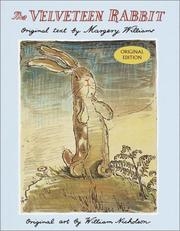
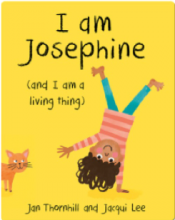
I Am Josephine (And I Am a Living Thing)
by Jan Thornhill
Meet Josephine: a spirited and curious girl, a big sister, a human being, a mammal, an animal, and a living thing—all identities she explores in this picture book.
ISBN: 9781771471565
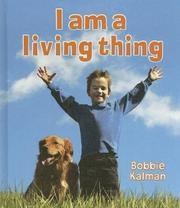
I am a living thing
by Bobbie Kalman
This book explains why people are living things and how we share needs with other living things, both plants and animals.
ISBN: 9780778732297
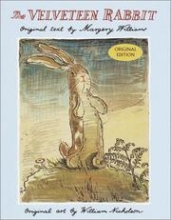
The Velveteen Rabbit
by Margery WIlliams
At first a brand-new toy, now a threadbare and discarded nursery relic, the velveteen rabbit is saved from peril by a magic fairy to become "real."
ISBN: 978-0385077255
Exploring Food Chains (Lessons)
Students develop and apply the skills of questioning, sorting & classifying and making connections as they explore food chains in different habitats.
Plants: Needs (Picture Collections)
8 images representing some of the needs of plants for healthy growth such as water, nutrients and light.
Materials
- Sets of picture cards depicting living and non-living things (1 set per group)
- Optional: fish environment (bowl, water, stones, living plant [number of plants is dependent on the size of the bowl], goldfish, food for goldfish)
OR
- Optional: terrarium environment (pre-made or make your own using a clear glass or plastic container, small pebbles, succulents and/or cacti, potting soil, and a spoon or a funnel for placing soil)
Preparation
- Prepare sets of picture cards of living and non-living things
- Set up a fish habitat or terrarium (optional). Be sure to include some living (live plants, fish) and non-living (pebbles, shells or small rocks) things for comparison
What to Do
Students develop and apply the skills of observing, comparing & contrasting and making conclusions as they investigate living and non-living things.
Students:
- work in small groups to sort and classify picture cards according to whether they think the objects are living or non-living.
- Educator supports and facilitates discussions as required, using questions such as “I notice that your living things group has some people, some animals and some plants in it. Why did you decide to put them all in the same group?” “You said that you put the weather vane with the living things group because it can move. What else can the weather vane do that other living things can do?” (e.g., can the weather vane take in food?)

Chart - Text Version
A chart contrasting living things and non-living things. Living things need air, water, food, shelter, space and have offspring that look like them. Non-living things do not.
- further sort and classify the living things group according to their own criteria.
- Educator asks questions such as “I notice you put the swan and the cat in the same group. What made you decide to do that?” “You have put the giraffe and the dog in the same group. Could I add a picture of a tree to that group? Why?” to help students understand that living things can be plants or animals (which includes humans). Some students may make a separate group for humans. Refer back to a book such as I am Josephine and I am a living thing to remind students that humans are also considered part of the animal group. This may become clearer as the group defines what it means to be a living thing.
- share their thinking about how to know if something is living or non-living.
- Educator records students’ thinking and facilitates discussion as required.
- determine criteria for classifying something as a living thing.
- Educator records criteria on a chart.
- pick one thing that everyone in the group agrees is a living thing (e.g., a rabbit, a newborn baby).
- Educator uses the recorded list to see if the living thing chosen by the group fits the criteria. If, for example, the group agrees that a rabbit will get bigger, it gets a check. If the group does not agree on something, it gets crossed off the list (e.g., a rabbit can talk).
- Educator facilitates a repetition of the process, picking some living things that would eliminate some of the misconceptions. For example, “I wonder what would happen if we used a plant instead of an animal? What plant shall we choose?” Continue until only the common characteristics of living things are left on the list (e.g., breathe, grow, reproduce).
- listen to a book such as I am a living thing by Bobbie Kalman. Use this information along with prior knowledge to draw conclusions about what living things have in common.
- Educator guides the reading and facilitates the discussion, asking students to listen for things that living things have in common that are not already on their list. (Living things are characterized by their ability to take in food to create energy, to respire, to make waste, to reproduce/create offspring, grow and change, and to respond to changes in their environment.)
- Educator records them on a list.
- compare living things to nonliving things, using revised list and picture cards of nonliving things
- Educator facilitates the conversation, asking questions such as “Would we classify a rock as a living thing? Why/why not?”
Assessment
Observe and document, using anecdotal comments, photos and/or video recordings, students’ ability to:
- Observe - students observe a variety of living and non-living things and record their observations
- Compare & Contrast - students identify similarities and differences between living and non-living things, drawing on observations and new and prior knowledge
- Make Connections - students use prior knowledge and information gathered throughout the Inquiry to draw conclusions about the characteristics of living things.
Co-constructed Learning
| Students: Saying, Doing, Representing |
Educator Interactions: Responding, Challenging |
|---|---|
| Educator Interactions: Responding, Challenging |
|
| Students sort and classify images of living things using their own criteria. |
|
| Students share their thinking about how to tell if something is living or non-living and make a list of criteria for classifying something as a living thing. |
|
| Compare a variety of living things to the criteria. |
|
| Draw conclusions about what all living things have in common. |
|
Cross-curricular Connections
Literacy
- Use oral language to explore and develop an understanding of ideas and concepts (e.g., the difference between living and non-living things)
- Use processing skills (e.g., draw conclusions about criteria for living things)
Mathematical Thinking
- Organize objects into categories by sorting and classifying objects (e.g., sort and classify living and non-living things; further sort and classify living things)
Extending the Learning
If your students are interested in learning more, the following may provoke their curiosity:
- Some Indigenous peoples believe that the universe and all natural objects within the universe have souls or spirits. This belief says that souls or spirits exist not only in humans but also in animals, plants, trees, rocks, and all natural forces and phenomena such as the rain, sun, stars and moon. In most Indigenous languages, there are no animate-inanimate comparisons between things: all souls are equal to human souls.
Contact a local Indigenous group to invite an Elder or Traditional Knowledge Keeper into your classroom to share stories about the Sun, the Moon, the water and the land from their cultures. Afterwards, discuss using questions such as:- “Are the Sun, the Moon, rocks and water living or non-living things? Why do you think that?”
- “Many Indigenous people believe that everything in the world has a soul or a spirit. How did the story demonstrate that belief?”
- "If you believed that everything in the world was living, how would you behave differently?”
- Students may wish to further explore the fish tank environment in terms of the role of non-living things. Discuss using questions such as
- “Why did we put the gravel in the fishbowl? What do you think would happen if we took it out?” (Gravel provides a home for beneficial bacteria that are necessary to eliminate waste produced by the fish, leftover food, and plant debris in the aquarium. If the bacteria don't have the gravel to live in they may not reproduce enough to keep the aquarium safe for the fish. The gravel acts like soil for the aquatic plants by providing a place for them to root and grow.)
- “We added a rock and a model of a sunken ship to our fishbowl environment. Why do you think this is important for the fish?” (Placing objects like rocks in the bowl helps to make the fish feel safer, more comfortable and less stressed. This means the fish are healthier and better able to fight diseases. These objects also encourage fish to behave more naturally and to be more active.)

- Read a story such as The Velveteen Rabbit by Margery Williams. Discuss using questions such as:
- “The author writes that the mechanical toys “…pretended they were real.” What do you think the author meant by ‘real’?”
- “In the story the boy tells his mother “...he isn’t a toy. He’s real.” Why do you think the boy would say that?”
- “Does being ‘real’ mean the same as being a living thing? Why or why not?”

Supporting Media

I Am Josephine (And I Am a Living Thing)
by Jan Thornhill
Meet Josephine: a spirited and curious girl, a big sister, a human being, a mammal, an animal, and a living thing—all identities she explores in this picture book.
ISBN: 9781771471565

I am a living thing
by Bobbie Kalman
This book explains why people are living things and how we share needs with other living things, both plants and animals.
ISBN: 9780778732297

The Velveteen Rabbit
by Margery WIlliams
At first a brand-new toy, now a threadbare and discarded nursery relic, the velveteen rabbit is saved from peril by a magic fairy to become "real."
ISBN: 978-0385077255
Learn More
Exploring Food Chains (Lessons)
Students develop and apply the skills of questioning, sorting & classifying and making connections as they explore food chains in different habitats.
Plants: Needs (Picture Collections)
8 images representing some of the needs of plants for healthy growth such as water, nutrients and light.